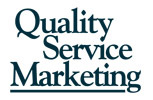I came across this “vision statement” that was meant to rally employees in an organization and industry undergoing change.
(Note: I’ve done some minor editing only to disguise the name and type of company,)
“We are ONE TEAM determined to build a thriving organization.
We understand that consumers will always have more choices; therefore our actions must by driven by what they need.
We will inform and empower our community through new products and yet-to-be imagined ways while we adapt and sustain our organization well into the future. We will drive urgent change.
By doing this, we will build a thriving organization, admired by employees and customers for making our community an even better place in which to live well, do business and prosper in a free society.”
I admit that I don’t know the circumstances of who created this vision statement (presumably a management team), how it was positioned, and how it was introduced. But its tone really put me off.
While the ultimate intent — to “build a thriving organization … for making our community an even better place” — is lofty, to me the language used throughout the vision statement sounds heavy handed: “We are ONE TEAM … our actions must be driven … we will drive urgent change … “
And then there’s the corporate ego that refers to “a thriving organization admired by employees and customers …”
So I ask you: is this a place you would want to work?
If you read this vision statement differently, I would love to know your reaction.






